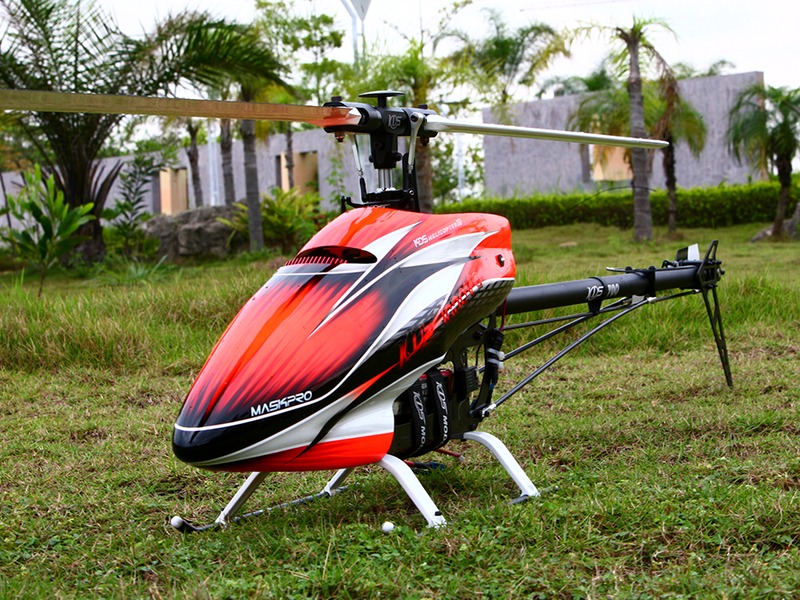What happens if a helicopter engine fails?

If a helicopter engine fails, the consequences can be dire. Depending on the cause of the engine failure and the altitude of the helicopter, the pilot may have only a few seconds to react to the situation. In the worst-case scenario, the helicopter can spiral out of control and crash.
When an engine fails, the most important thing for the pilot to do is act quickly to try to salvage the helicopter. If the engine fails at low altitude, the pilot may be able to initiate an autorotation, which is a controlled descent that uses the rotors to create lift and keep the helicopter from crashing. Autorotation is a skill that must be practiced and perfected in order to be effective.
If the engine fails at a higher altitude, the pilot may be able to glide the helicopter down to a lower altitude and attempt an autorotation. However, this can be a risky maneuver, because there may not be enough altitude to safely reach the ground before the rotors stop and the helicopter crashes.
Another option for a high-altitude engine failure is to attempt an emergency descent. This is an uncontrolled dive that quickly loses altitude, allowing the pilot to try to reach a lower altitude where they could attempt an autorotation. However, this is a very risky maneuver, as there is a high chance of crashing the helicopter.
Regardless of the altitude at which the engine failure occurs, the pilot must act quickly to try to salvage the helicopter. If the engine failure is due to mechanical failure, the pilot might be able to restart the engine to regain control of the helicopter. If the failure is due to fuel exhaustion, the pilot may need to glide or glide-dive the helicopter to an area where they can perform an emergency landing.
If all of these attempts fail, the pilot must prepare to crash the helicopter. The pilot should ensure that the passengers are wearing their seatbelts and prepare for a crash landing. If possible, the pilot should try to guide the helicopter towards an area with soft terrain, such as trees or water, to reduce the chance of injury to the pilot and passengers.
No matter the cause of the engine failure, the pilot must act quickly and decisively to try to salvage the helicopter. If all efforts fail, the pilot must prepare for a crash landing and try to guide the aircraft towards an area with soft terrain to reduce the risk of injury.
Comments / Question
2. Check the engine instruments and Flight Instruments for indications of engine stoppage.
3. Identify the failure, if possible.
4. Trim the aircraft for best glide.
5. Check the aircraft's altitude and determine the best place for an emergency landing.
6. Notify air traffic control (ATC) of the emergency.
7. Secure the engine as per the checklist.
8. Activate the emergency checklist.
9. Follow the emergency checklist procedure.
10. Make the emergency landing.
2. Use the correct grade of oil and replace it regularly.
3. Check the fuel filter and replace it when necessary.
4. Check the spark plugs and replace them when necessary.
5. Check the air filter and replace it when necessary.
6. Check the coolant level and top it up when necessary.
7. Check the belts and hoses for wear and tear and replace them when necessary.
8. Check the battery and replace it when necessary.
9. Check the exhaust system and repair or replace it when necessary.
10. Monitor the engine temperature and take action if it gets too high.
2. Contaminated Fuel
3. Combustion Chamber/Turbocharger Damage
4. Compressor and Turbine Imbalance
5. Ignition System Malfunction
6. Lack of lubrication
7. Foreign Object Damage
8. Component Wear and Aging
9. Fuel and Intake System Malfunctions
10. Structural Fatigue or Corrosion Damage
2. Develop a comprehensive preflight checklist, including inspection of all engine components.
3. Perform proper pre-flight and post-flight engine management and maintenance.
4. Regularly practice autorotation drills.
5. Maintain an awareness of potential engine failure symptoms and execute the proper emergency procedures if the failure occurs.
6. Ensure that the designated emergency landing area is clear of obstacles.
7. Utilize an emergency descent procedure to rapidly reduce altitude.
8. Assess the area for an emergency landing, scan for powerlines, other obstacles and terrain features.
9. Select an area for an emergency landing that offers the greatest chance of a safe landing.
10. Implement appropriate emergency procedures and checklists prior to, during and after the landing.

